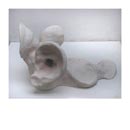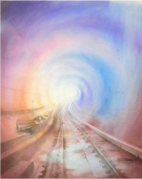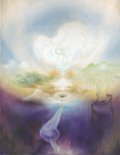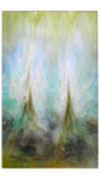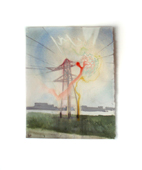
| gallery |
| about my work |
| look into my kitchen |
|
Goethe The works on this page are related to Goethe. They were made as seperate works, over the past few years. Apart from Goethes literature, I also find his scientific approach worthwile. His method was phenomenology, which means: being able to (psychologically and spiritually) read phenomenons. Instead of machines, one uses the senses and the body as an organ of perception
Goethe was a scientist who strived for objectivity - even when his objectivity was more idealistic and warm, like that of Oliver Sacks. To Goethe, the world of Idea was no abstraction. He saw nature as: the thoughts of a or the Creator(s), most referred to as "God", in a visible, tangible and living form. One of Goethes inventions was 'the primal plant' - a metaphysical reality: a process in time (metamorphosis) on which al flora is based, in all its different species. The 'primal plant' shows itself in a different way, in each species. According to Goethe, primal animal and primal man were the same thing. Phenomenology, Goethes method of investigation, means: to use your own senses - using instruments only as extensions of the senses - and then to get to the essence or idea of the phenomenon, by a combination of thinking and perception. According to him, it's possible to develop one's perception until one sees the spirit or idea of phenomena in the phenomena itself. It is a more artistic way of doing research, than the regular measuring-only. In this process one works, apart from eventual equipment, on one's self as a perceptive unity of spirit, soul and body. For text about perception, click here. In his Faust, Goethe described the process of development of man who wants to find the meaning of life by his own effort. Evil has an indispensible role (played by Mefistofeles). I especially like part 2, where Faust falls in love with Helena, and goes into the antique underworld to find her. This is the world of living ideas: the forces of nature. In my old work, biblical themes arose all by themselves. In my new work, themes from Faust came up in the same way Dwaallichten en Homunculus). "Urpflanze" was made with goethes concept of Primal Plant in mind - in the composition there are areas of "root", "stem" and "flower". I took a feeling or idea, and used this scheme of composition to see how this feeling might look like. After that, I give it a name, after am existing plant it makes me think of. Cellular process is an imagination of another phenomenon I often see in different situations - the impuls of doing (an idea) is of a different nature, than the process of actually doing it.. "transmission tower" was made after I heard a story about a spanish village, lying under transmission towers, where a significantly hightened number of children suffer from leukemia. |
||||||||||
